Hybrid Reviews
Review: Nike Covert 2.0 Hybrids
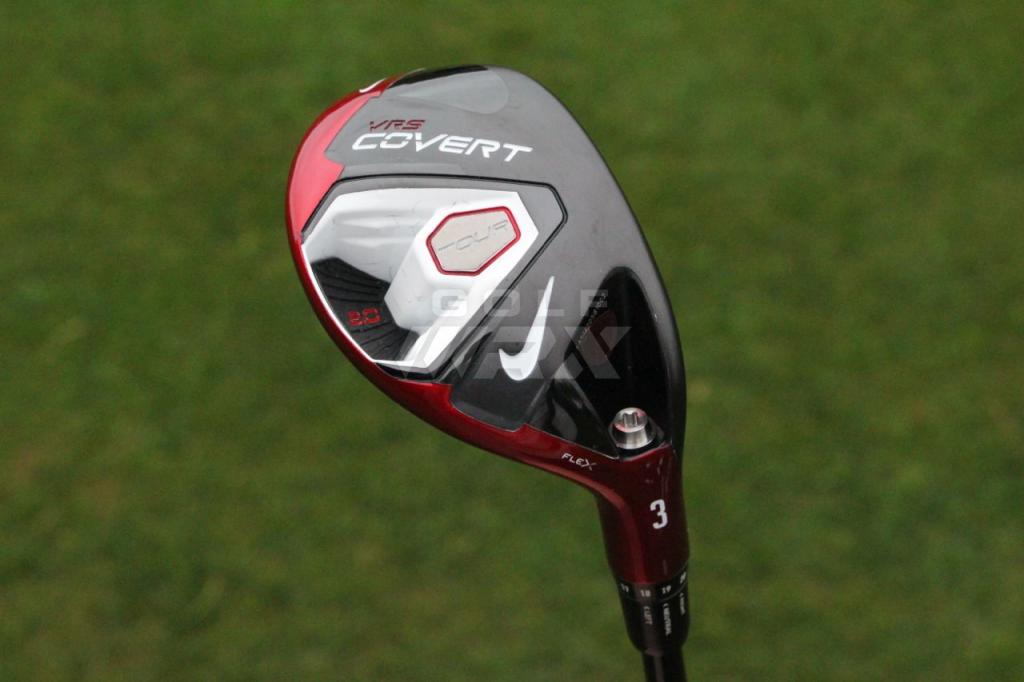
Pros: The crew at Nike took a fresh approach in designing the new VRS Covert 2.0 hybrids, making the lower-lofted clubs more forgiving and easier to launch than previously offered models. These new hybrids are long, accurate and versatile. If that isn’t appealing enough, they’re also easy on the eyes.
Cons: The FlexLoft system, which allows golfers to adjust loft and face angle independently, is only available on the Covert 2.0 Tour hybrids. Some golfers might find that the vibrant red paint job is too much of a head-turner and would prefer to play a more understated set of clubs.
The Takeaway: Golfers of varying skill level are abandoning their long irons in favor of hybrids. If you’re searching for a more forgiving utility club that can help you land the ball softly on long approach shots, the new Covert hybrids are up for the challenge.
Overview
When it comes to hybrids, Nike hasn’t come close to upending traditional market leaders Adams, Callaway, Ping and TaylorMade. But that hasn’t stopped the engineers behind the swoosh from introducing one of the most forgiving clubs in the utility category.
Tapping into what the folks at The Oven call “Linear Transition Design,” Nike released the VRS Covert 2.0 hybrids with progressively smaller head sizes as loft increases, while increasing the face height on each model. It’s a pattern commonly seen in fairway wood design that focuses on improving both the performance and playability of lower-lofted clubs. As you would expect, the 2 and 3 hybrids (17 and 20 degrees, respectively) play more like fairway woods, while the high-lofted hybrids are more iron-like and designed for approach shots to the green.
Compared to last year’s models, the new Covert hybrids have many subtle, but notable improvements. The new heads on both the tour and standard models are slighter heavier and deeper-faced. Nike’s patented NexCOR face technology has been reengineered to deliver faster ball speed and increased distance, even on off-center hits. The high-speed cavity design that was the signature feature introduced a year ago has been reinforced with Nike’s new Fly-brace technology, which increases stability, improves energy transfer to the ball and reduces twisting at the moment of impact.
The Tour model allows the golfer to adjust the loft (up to five degrees) and face angle independently using Nike’s FlexLoft system. The standard edition hybrids are not adjustable, but are available in five models ranging from 17 to 26 degrees. Both the tour and standard hybrids are paired with premium shaft offerings from Mitsubishi Rayon. The tour hybrid uses a Kuro Kage Silver 80-gram graphite shaft for more stability and lower spin. The standard edition comes with the Kuro Kage Black HBP Graphite 70-gram shaft, which has a higher balance point to allow for the slightly heavier club heads.
As in the case of Nike’s Covert drivers and fairway woods, the candy-apple red paint job on the crown can take a little getting used to at first, especially if you’re not accustomed to receiving unsolicited attention. I haven’t been paired with a single golfer on the course who hasn’t stolen a wayward glance at my bag.
Owners of the original Covert hybrids will notice that the design of the new models remain virtually unchanged. Nike wisely resisted the urge to overhaul what is already regarded as a winning design. This time around, Nike took to refining the underside of their golf clubs, smoothing out some of the chunkier elements, reducing the footprint and giving the VRS Covert typeface some much-needed oomph.
The following hybrids were tested using factory-set loft and face angle settings:
- Covert 2.0 hybrid (20 degrees) with a 40-inch Kuro Kage Black 70S ($179 MSRP)
- Covert 2.0 Tour hybrid (20 degrees) with a 41-inch Kuro Kage Silver TiNi 80S ($229 MSRP)
Testing was conducted at Pete’s Golf Shop in Mineola, N.Y., a Golf Digest Top-100 club fitter, and was supervised by Kirk Oguri, an equipment specialist and teaching professional. The clubs were evaluated using a Foresight launch monitor.
Performance (Covert 2.0)
The Nike Covert 2.0 hybrids, much like the drivers and fairway woods, have slightly heavier heads than last year’s models and ship with Golf Pride’s 55-gram 2G Tour Wrap grips. I found, at times, that the driver and fairway woods were challenging to swing optimally, especially for golfers like myself who have spent years playing lighter equipment. The hybrids, on the other hand, were remarkably easy to hit.
The standard edition hybrid played very much like a high-lofted fairway wood. The center of gravity is much farther back in the traditionally-rounded club head, and is more forgiving than its tour sibling. Needless to say, it’s designed to launch higher and spin more. My swing speed is about 95 mph with a driver, and my average shot produced a launch angle of 14 degrees and 4500 rpm of total spin. My ball speed was 121.1 mph, leading to a carry distance of 174 yards (192 yards total).
The numbers were nearly identical to my gamer — a 2011 TaylorMade Rescue (19 degrees) — that came stock with a regular-flex, 65-gram Aldila shaft. My lower-spinning TaylorMade actually produced a little more rollout than the Covert, and was generally easier to work in both directions. I found the Covert, on the other hand, a little more difficult to turn over, which isn’t necessarily a bad thing. Given a choice, I’d rather play a club that consistently produces a certain shot shape than have to worry about the occasional double-cross surfacing at the most inopportune moment on the course.
Performance (Covert 2.0 Tour)
This was the rare case where the tour model clearly outperformed the standard-edition counterpart for a golfer like myself who doesn’t generate tour-level club-head speed.
The Covert 2.0 Tour, with its smaller, less-rounded head, produced a penetrating ball flight, even on off-center hits. My numbers on the launch monitor were considerably more desirable than the results I generated swinging the standard model. My ball speed went up 123.1 mph while my total spin decreased by about 800 rpm. My average carry was 186 yards with a total distance of 203 yards, an increase of 12 yards of carry.
Even though the tour model (set at 20 degrees) is supposed to behave like a fairway wood, it launched more like a driving iron for me. If I had to choose between the two, the lower-launching tour model would be the outright winner. The compact profile of the head is more versatile from a variety of lies, particularly out of the rough where a well-engineered hybrid can truly save a stroke. The fact that it hits the ball a little farther than the standard edition is an added bonus.
Look and Feel
Nike straddled a thin line bringing the Covert designs to market. The team wanted their clubs to look brash, muscular and athletic, reinforcing the ethos of their brand. But they also wanted the Covert drivers, woods and hybrids to pay homage to the classic club designs of yesteryear: clean, understated and sophisticated. In my estimation, they’ve succeeded in striking a balance.
The Covert hybrids are confidence-inspiring at address. There are no unnecessary graphical elements applied to the crown that make a play for your attention. Some golfers have expressed annoyance about having to stare at the white Nike swoosh near the heal, but I’ve never thought twice about it.
The hybrids, much like the other clubs in the Covert line, feel well-balanced in the hands. As mentioned previously, they are not lightest sticks in the marketplace and a golfer has to avoid the urge to over-swing and let the weight of the club do the work. When you do hit a well-struck shot, the hybrids will let you know it with an unmistakable whoosh that will please golfers who are sticklers for sound.
There are a few minor differences that should be noted between the different hybrid models. The head on the tour version is slightly heavier than the standard model and features a black, matte finish that can help to reduce glare. The FlexLoft adjustable hosel system is also only available on tour model. Whether that feature is a deal breaker or not is up to the individual golfer to consider when analyzing both their playing style and gapping needs.
The Bottom Line
The debut of the original Covert drivers, woods and hybrids were a surprise hit in the golf equipment arena. The message from Beaverton, Ore., was plain and simple. Can you hear us knocking? Considering all the changes, the second-generation Covert line has succeeded in improving the look and performance of each club, and it appears that Nike is ready to kick that door down.
The new hybrids are packed with innovation, forgiveness and versatility. Whether you require a club that can stick the green on a long par 3, or prefer a hybrid that can compete with and probably out-drive most high-lofted fairway woods, there’s a Covert designed around your needs.
[wrx_buy_now oemlink=”http://store.nike.com/us/en_us/pd/vr_s-covert-2-tour-hybrid-4-golf-club/pid-947697/pgid-10282896″ oemtext=”Learn more from Nike” amazonlink=”http://www.amazon.com/gp/product/B003CRBT5S/ref=as_li_qf_sp_asin_il_tl?ie=UTF8&camp=1789&creative=9325&creativeASIN=B003CRBT5S&linkCode=as2&tag=golfwrxcom-20&linkId=3IP66WJHWKTN5SML”]
- LIKE42
- LEGIT5
- WOW9
- LOL6
- IDHT15
- FLOP0
- OB1
- SHANK0
Equipment
GolfWRX Spotlight: Tour Edge Exotics EXS Pro hybrid

Hybrids, for many of us, are one of the clubs that don’t get replaced very often. Once we find one that we can confidently hit in pressure situations, it stays in the bag for as long as possible.
I am exactly one of those players as my hybrid has been in the bag since 2015 and has the paint chips and embedded dirt to prove it. That club has been my crutch to lean on when I couldn’t hit anything else straight off the tee, needed to hit the green on a long par 3, or go for the green in two on a par 5.
I wasn’t really looking for a new one when the Exotics EXS Pro showed up at my door, but the shape grabbed my attention, and I had to give it a try.
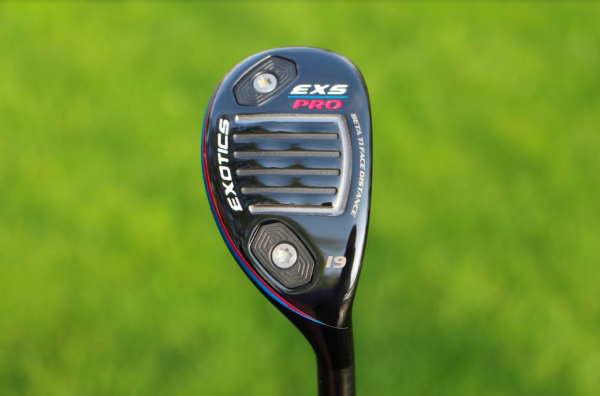
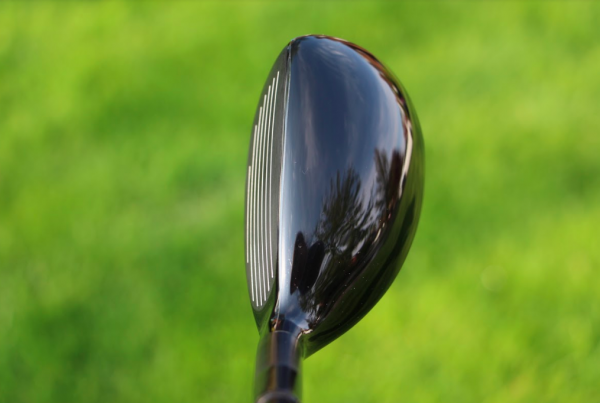
Tour Edge just announced the Exotics EXS Pro line of woods and they are “from the tour van” with tour-inspired shapes and performance. You can read the whole launch story we did HERE and also read about the new fairway woods.
The EXS Pro hybrid is smaller and has a deeper face than its EXS 220 sibling, giving it a look that better players look for. The shape is initially what got me, as it isn’t a tiny hybrid like we have seen with some other “tour” versions, but it isn’t too large either. The head is also a little more rounded overall, without a sharp toe or other lines. As I am one to hit my hybrid off the tee a good amount, the deep face was welcome—while it isn’t so deep that you can’t hit it off a tight fairway lie. The moveable weights in the sole allow you to adjust the head in order to make it an “anti-left” club that many better players fear.
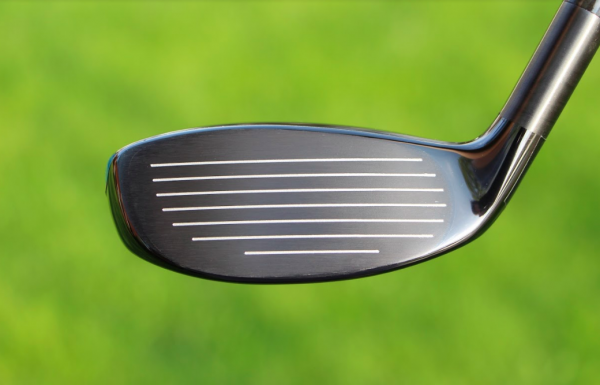
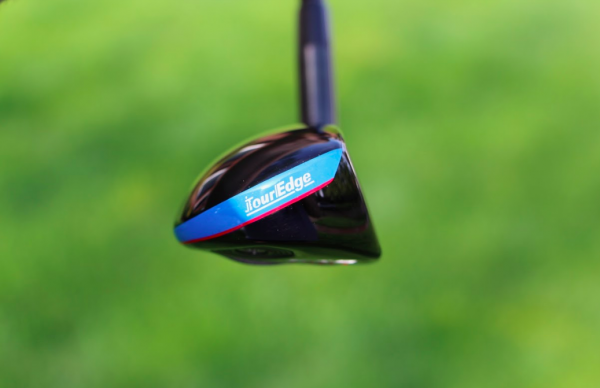
On the course, I really felt comfortable with the EXS Pro right away. The first shot came off the face feeling hot thanks to the Beta Ti Face that is brazed onto the stainless steel body. The ball speed is really fast and the shot shape was flatter than my previous hybrid setup. If you are a high ball hitter and have a hard time with hybrids, the EXS Pro should be on your shortlist of new ones to try. Better players are going to love being able to flight the ball for windy conditions. Distance is of course fantastic, but it is repeatable and consistent.
The EXS Pro is a little longer than my previous hybrid, but still fitting into the distance that I require. Tour Edge didn’t just make the club longer to add distance, the lofts are pretty standard as the 19-degree I have is only 40.25” long and has a lie angle of 57.25 degrees. Dialing in the EXS Pro should be no problem since they make six lofts between 16 to 22 degrees to fit your gapping needs.
Over the past two weeks, I have found that this EXS Pro does remove the left side of the course. Tour Edge claims it is an anti-left hybrid, and so far I have found that to be nothing short of the truth. Shots are slightly fade biased with the heavier weight in the toe, but you can still easily turn it over and hit it straight. Tight lies or fairly deep rough are no problem with the compact shape and Slipstream sole, making it versatile all over the course. I
like the deeper face for hitting if off the tee and shots where the ball is sitting up in the rough. That deep face just gives me a little more confidence that if I get a little steep with my swing I will still be able to save a decent shot.
My only real complaint is that the EXS Pro’s Slipstream sole collects some dirt, and you have to grab a tee to clean it out, but really nothing that should stop anyone from putting this in their bag.
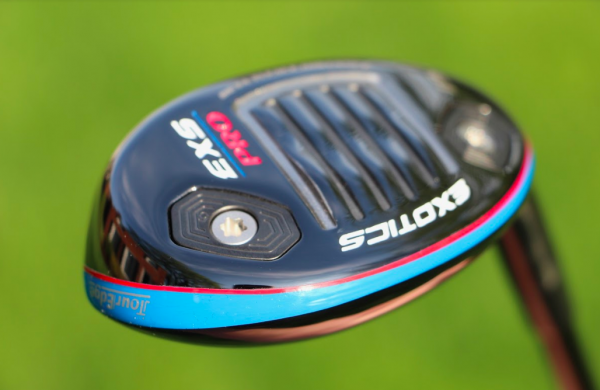
Overall The Tour Edge Exotics EXS Pro is an anti-left hybrid that is built for better players. What is might not have in total forgiveness it makes up for in lower launch, great distance, and its fade bias. If you have been struggling to find a hybrid to fit your game, the Tour Edge Exotics EXS Pro could be your answer.
- LIKE79
- LEGIT20
- WOW9
- LOL2
- IDHT1
- FLOP1
- OB4
- SHANK8
Hybrid Reviews
Review: Callaway XR and XR Pro Hybrids
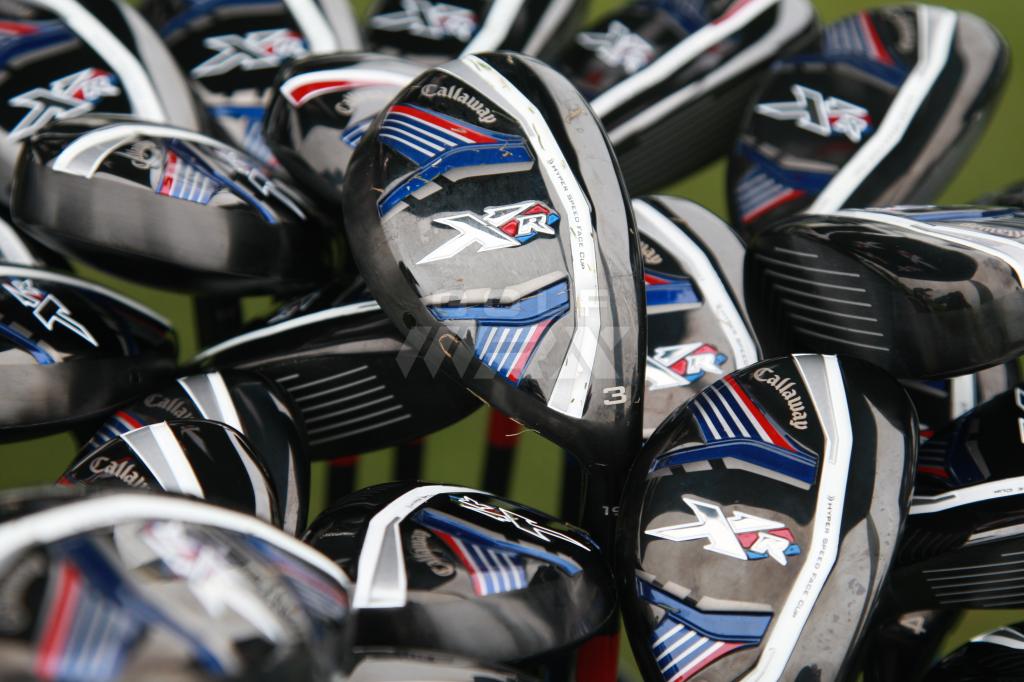
Pros: The hottest hybrids in golf. The XR and XR Pro are also exceptionally well-rounded, with pleasing looks, feel and performance from the tee, fairway and rough.
Cons: Not adjustable.
Who are they for? Golfers who desire a more iron-like hybrid will likely prefer the XR Pro, whereas those seeking a slightly larger, more forgiving club that plays more like a fairway wood will find the standard XR a better fit.
The Review
Copy and paste. By that I mean, copy the review for the XR and XR Pro fairway woods and paste it right here. Everything I loved about the XR fairway woods applies to the hybrids, and the criticisms are nearly identical as well. Essentially, these clubs are long, forgiving and visually appealing. The only knock? No adjustability.
Sometimes an equipment manufacturer will redesign a product in hopes of invigorating sales. Sometimes the redesign provides tangible benefits for the player. With the XR and XR Pro hybrids, Callaway has done both.
A redesigned internal standing wave, which boosts MOI, a measure of ball speed retention on mishits, offers golfers more distance regardless of where they hit shots on the face. Couple that with a center of gravity that is as low as Callaway has ever engineered in a hybrid (for a higher launch and less spin), and you have one bad mama jama.
Generally, golfers who opt for a hybrid do so for one of two reasons. They either want a club that performs a lot like a long iron, but is more forgiving… or they want a club that launches high like a fairway wood, but offers more control. Either way, the XR series has you covered. In both on-course and launch monitor testing, both hybrids launched higher than previous models. So if you prefer to see a flatter ball flight, going down in loft or pairing the head with a lower-trajectory shaft will help.
I’ve never hit a hybrid so high while still maintaining an ideal trajectory. Don’t be shocked if you demo either club and find that it launches higher and carries farther than what’s currently in your bag — especially if you currently carry a long iron or driving iron.
With these hybrids, the sweet spot is gone. It’s more like the sweet zone. As long as you can make semi-solid contact, the results are acceptable. If you’re an above average ball striker, you’ll likely find your misses to be decidedly more consistent.
In testing, both clubs excelled as secondary options off the tee, and more than held their own from the ground — even in light and deep rough. That said, where both clubs differentiated themselves for me was on long approach shots or second shots into a par 5. Being able to hit a club high enough (and far enough) to hold a green from 220+ is something the XR series does better than any other hybrid I’ve tested.
A note for better players: The smaller profile of the XR Pro is not indicative of its forgiveness. In fact, I found it to be pleasantly forgiving — much more so than other hybrids with similar shape and playing attributes. Ultimately, if you select the XR over the XR Pro it will be because the XR gave you better trajectory and distance numbers, not because one model was significantly more forgiving than the other. In fact, both models exhibit the holy grail of exceptional distance, hardy forgiveness and precise workability. It’s why no hybrid did better than the XR in GolfWRX’s 2015 Gear Trials: Best Hybrids List.
The XR and XR Pro hybrids come in a variety of lofts. The XR Pro is offered in lofts of 16, 18, 20 and 23 degrees, whereas the XR is available in lofts of 19, 22, 25 and 28 degrees. Stock length on the 20-degree XR Pro is 40 inches, whereas stock length on the 19-degree XR is 40.5 inches. If you do get fitted and ultimately select one of these models, be sure to discuss length, as the iron you’re replacing is likely at least 0.5-inches shorter.
For people who might only look at the number associated with the club (i.e. 3H = 19 degrees), caveat emptor. In testing, the 3 hybrid had carry distances closer to a 5 wood than a 3 iron. As such, if you’re looking to replace a specific iron, I’d suggest starting at a number one higher than the iron you’re looking to replace. Specifically, if you’re dropping a 3 iron, start by testing the 4 hybrid. In addition, I found the 19-degree XR hybrid to launch nearly identically to the 20-degree XR Pro, albeit with less spin. I can’t help but think that was intentional on the part of the Callaway engineers.
Again, I’d like to see both models with the same array of shafts, as some might look at the stock shaft in the XR and presume the club is geared toward slower-swinging or less demanding players. This simply isn’t true.
The Numbers
Head: Callaway XR (19 degrees)
Shaft: Project X LZ (Stiff)
- Average Ball Speed: 145 mph
- Average Backspin: 5400 rpm
- Average Launch Angle 22 degrees
- Average Carry Distance (at 5000 feet): 237 yards
- Estimated Carry Distance at Sea Level: 214 yards
Head: Callaway XR Pro (20 degrees)
Shaft: Project X LZ Pro 6.0 (Stock)
- Average Ball Speed: 145
- Average Backspin: 5100 RPM
- Average Launch Angle 21.5 degrees
- Average Carry Distance (at 5000 feet): 239 yards
- Estimated Carry Distance at Sea Level: 215 yards
Gamer Head: Callaway Alpha 815 (20 degrees)
Gamer Shaft: Veylix Rome 988 (Stiff)
- Average Ball Speed 143.8 MPH
- Average Backspin 4975 RPM
- Average Launch Angle 19 degrees
- Average Carry Distance (at 5000 feet): 238 yards
- Estimated Carry Distance at Sea Level: 215 yards
The Takeaway
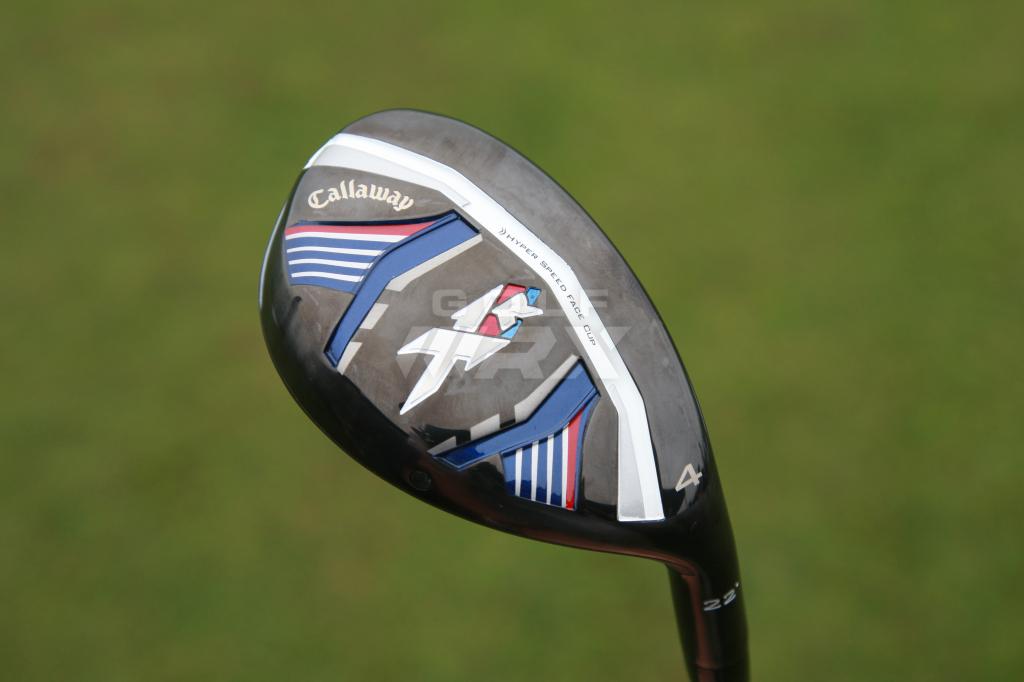
Callaway’s XR Hybrids received top ratings for distance and forgiveness on GolfWRX’s 2015 Gear Trials: Best Hybrids List.
The XR and XR Pro hybrids from Callaway, with apologies to Tina Turner, are “simply the best” — at least for me. The lone shortcoming is a lack of adjustability, and depending on where you fall on this topic that may not be a significant weakness.
In describing the XR series, one quickly runs short of superlatives. Selecting either model as an upgrade to what’s currently in your bag is akin to throwing a rock into the ocean and hoping it gets wet. It’s nearly a can’t-miss proposition.
Related
- Our review of Callaway’s XR and XR Pro drivers
- Our review of Callaway’s XR and XR Pro fairway woods
- Our review of Callaway’s Big Bertha Alpha 815 fairway woods and hybrids
- LIKE151
- LEGIT25
- WOW8
- LOL5
- IDHT4
- FLOP6
- OB3
- SHANK11
Hybrid Reviews
2015 Gear Trials: Best Hybrids
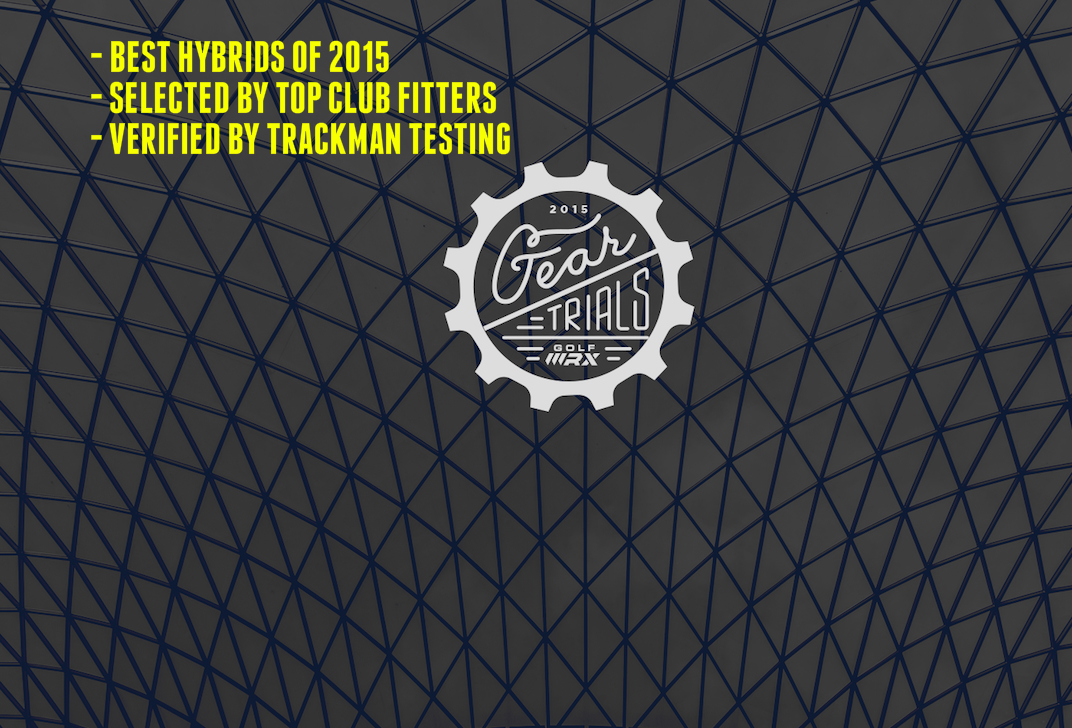
Following the trend of new drivers and fairway woods, hybrid clubs have become much lower spinning than their predecessors in recent years. It’s a change that has widened their target audience from golfers looking to replace their long irons with clubs that fly higher and stop quicker on the greens, to… just about any golfer.
How do you know if you should consider a new hybrid? If you’ve ever wished that your current long irons or hybrids carried farther, that’s a pretty good indication that an updated model could be good for your game.
Our 2015 Gear Trials: Best Hybrids are plenty long, but they’re also very forgiving. So even if you’re not interested in hitting your clubs farther, you could still find more consistency from one of the six models below.
The Winners
The clubs and subsequent ratings were selected by our Gear Trials Panel, six of the top-rated custom golf clubs fitters in the world. Our 2015 Gear Trials Panel includes:
- Carl’s Golfland (Michigan)
- Cool Clubs (15 locations in 4 countries)
- Haggin Oaks (California)
- Miles of Golf (Michigan, Ohio)
- Modern Golf (Canada)
- True Spec Golf (Bahamas/Miami/NYC)
Learn more about our Gear Trials: Best Clubs Lists
The Ratings
While reviewing each of the 2015 Best Hybrids below, remember the purpose of the clubs. They bridge the gap between a golfer’s shortest fairway wood and the longest iron they can hit consistently. Some golfers can make that transition without a hybrid, while others may need several hybrids.
The best way to learn if a hybrid is good for you, or how many hybrids you might need, is to go through a professional fitting — but if that’s not an option for you, you can use our rating to your advantage. The hybrids that scored highest in our Distance Ratings tend to work best for golfers looking to shed spin, while the clubs that score high in our Forgiveness Ratings tend to be more consistent on mishits.
Along with our six winners, we’ve also listed three lower-spinning alternatives: Callaway’s XR Pro, TaylorMade’s AeroBurner TP and Titleist’s 915Hd. These clubs will work best for a smaller percentage of golfers than our six best hybrids, but they’re fueled by the same technologies as our winners.
Note: The list below is in alphabetical order.
Callaway Big Bertha
- Headsize: 126cc (3 hybrid)
- Adjustable Hosel: Yes, 3-degree range
- Price: $249.99
You might be surprised to see Callaway’s Big Bertha hybrids, which were released alongside the company’s Big Bertha irons in the Fall of 2014, make our list. If so, you probably haven’t hit them.
[quote_box_center]”The Big Bertha is hard to miss,” said one of our Gear Trials Panelists. [/quote_box_center]
The reason to play a Big Bertha hybrid over the higher-rated XR hybrids are:
- Their larger size, which makes them appear more fairway wood-like than any other hybrid on this list.
- They’re adjustable, which allows golfers to dial in the exact loft and lie angle they need to get the most out of the clubs.
Like the XR hybrids, the Big Bertha hybrids use Callaway’s Hyper Speed Face cups to boost their ball speeds and forgiveness. They’re slightly higher-spinning than the XR, however, which will work very well for their target audience of slower swing speed golfers. But higher swing speed players shouldn’t count them out — particularly the 3 hybrid when adjusted to 18 degrees.
The Big Bertha hybrids are offered in lofts of 19, 22, 25, 28 and 32 degrees.
[wrx_buy_now oemlink=”http://www.callawaygolf.com/golf-clubs/hybrids-2015-big-bertha.html” oemtext=”Buy it from Callaway” amazonlink=”http://www.amazon.com/gp/product/B00NURXJHG/ref=as_li_qf_sp_asin_il_tl?ie=UTF8&camp=1789&creative=9325&creativeASIN=B00NURXJHG&linkCode=as2&tag=golfwrxcom-20&linkId=AJVRSOTPPURINDGU”]
Callaway XR
- Headsize: 122cc (3 hybrid)
- Adjustable Hosel: No
- Price: $219.99
Callaway’s XR is likely the longest hybrid on this list, receiving the highest possible rating of 10 in distance, and thanks to Callaway’s slick engineering, it also ties for first in forgiveness (9.5) with Ping’s G30 hybrid.
[quote_box_center]”This should be the first hybrid you test,” said one of our Gear Trials Panelists. [/quote_box_center]
Like Callaway’s XR fairway woods, the XR hybrids set themselves apart from the competition with a mid-sized club head that offers a high launch, relatively low spin and more forgiveness than its predecessors. They’re offered in lofts of 19, 22, 25 and 28 degrees.
Our lone request for 2016: Can you make future models adjustable, Callaway?
Want a more iron-like hybrid? Callaway’s XR Pro hybrids ($229.99) measure a slim 98cc at 20 degrees, and offer a lower-spinning trajectory that many better players prefer from their hybrids. They’re offered in lofts of 16, 18, 20 and 23 degrees, but we recommend the 20- and 23-degree models in particular as 3- and 4-iron replacements. We wouldn’t be surprised if you carried them as far, if not farther, than your older, lower-lofted hybrids
- Our review of Callaway’s XR and XR Pro hybrids.
- Learn more about Callaway’s XR Drivers, Fairway Woods and Hybrids.
[wrx_buy_now oemlink=”http://www.callawaygolf.com/golf-clubs/hybrids-2015-xr.html” oemtext=”Buy it from Callaway” amazonlink=”http://www.amazon.com/gp/product/B00QRJBY44/ref=as_li_qf_sp_asin_il_tl?ie=UTF8&camp=1789&creative=9325&creativeASIN=B00QRJBY44&linkCode=as2&tag=golfwrxcom-20&linkId=TWFKUSUCISU34PQ7″]
Cobra Fly-Z
- Headsize: 105cc (3-4 hybrid)
- Adjustable Hosel: Yes, 4-degree range
- Price: $199.99
Cobra’s Fly-Z hybrid is sized like a better-player hybrid, but packs the forgiveness we’d expect from a larger model. That’s thanks to its rearward center of gravity (CG), which boosts consistency.
[quote_box_center]”Fly-Z, like [Cobra’s] Bio Cell last year, will still perform for the average player,” said one of our Gear Trials Panelists. [/quote_box_center]
If you’re a high-spin player, however, the Fly-Z might not be for you. It’s one of the highest-spinning models on this list, which is the reason for its relatively low Distance Rating (8).
Like the Fly-Z fairway woods, the strength of the Fly-Z hybrids is their versatility. They’re offered in three models: a 2-3 hybrid that adjusts from 16-19 degrees, a 3-4 hybrid that adjusts from 19-22 degrees and a 4-5 hybrid that adjusts from 22-25 degrees. Its wide-ranging adjustability is a great tool to have if you need to fill a specific yardage gap in your bag.
[wrx_buy_now oemlink=”http://www.cobragolf.com/fly-z-hybrid” oemtext=”Buy it from Cobra” amazonlink=”http://www.amazon.com/gp/product/B00R4ADF3S/ref=as_li_qf_sp_asin_il_tl?ie=UTF8&camp=1789&creative=9325&creativeASIN=B00R4ADF3S&linkCode=as2&tag=golfwrxcom-20&linkId=E2QEQHVEQB22TUEP”]
Ping G30
- Headsize: 110cc
- Adjustable Hosel: No
- Price: $229.99
[quote_box_center]”G30 gets the ball up in the air easy, and is on par with the G25 with slightly more ease to height,” said one of our Gear Trials Panelists.”[/quote_box_center]
The G30 hybrids use a new heat-treated 17-4 stainless steel face that boosts their characteristic time (CT), a measure of spring-like effect, 20 points higher than the G25 hybrids. They’re still not as long as other hybrids on this list, but they offer a noticeable improvement in ball speed over past G-Series hybrids, and with their similar trajectory that means they’ll likely carry a few yards farther for most golfers.
There’s no turbulators on the G30 hybrids, due to their smaller, more aerodynamic size, but the shape of the hybrids was tweaked from the G25 to include a flatter top rail and a higher heel section that gives them a more square appearance at address. We like the look, and see it as a change that will be enjoyed by the majority of golfers.
We wish the G30 hybrids were adjustable, but they are offered in five lofts: 17, 19, 22, 26 and 30 degrees. The higher-lofted models, because of the G30’s higher-spinning nature, are great for golfers looking for more stopping power on the greens, while the 17-degree model will be enjoyed by better players seeking a replacement for a pesky driving iron or a troublesome 4 or 5 wood.
TaylorMade AeroBurner
- Headsize: 112cc (19 degrees)
- Adjustable Hosel: No
- Price: $229.99
What the AeroBurner lacks in forgiveness, it makes up for in horsepower. Golfers may or may not be able to hit it as far as Callaway’s XR, but the AeroBurner offers a unique shape that’s intriguing for those who haven’t found much success with traditional hybrid shapes. It’s also one of the highest-launching, if not the highest-launching hybrid on this list.
The calling card of the AeroBurner, however, is speed — from its Aerodynamic crown shape and its lighter weight, which will convert to more swing speed and more distance for some golfers. The AeroBurner hybrids are not adjustable, but they are available in lofts of 19, 22, 25 and 28 degrees.
Need more fade bias? TaylorMade’s AeroBurner TP hybrids ($269.99) offer golfers a more traditionally weighted hybrid. They’re the same size as the standard versions, but come with heavier heads and shafts that tend to give better players more control over trajectory. They also have a 2-degree flatter lie angle and a 1-degree more upright face angle that will please golfers who have struggled with the hybrid hooks in the past. They’re available in lofts of 19 and 22 degrees.
[wrx_buy_now oemlink=”http://taylormadegolf.com/AeroBurner-Rescue/DW-WZ206.html” oemtext=”Buy it from TaylorMade” amazonlink=”http://www.amazon.com/gp/product/B00QLVP7JG/ref=as_li_qf_sp_asin_il_tl?ie=UTF8&camp=1789&creative=9325&creativeASIN=B00QLVP7JG&linkCode=as2&tag=golfwrxcom-20&linkId=O5BLTFF3VXFAZFYA”]
Titleist 915H
- Headsize: 118cc
- Adjustable Hosel: Yes, 2.25-degree range
- Price: $249.99
Looks aren’t a factor in our Best Hybrids list ratings, but if they were, Titleist’s 915H would likely be the winner.
The 915H’s pear-shaped head is large enough to inspire confidence, but not too large as to limit versatility. While the 915H is not the longest hybrid on this list, or the most forgiving, it’s great in both areas, and offers noticeably more ball speed than previous hybrids from Titleist thanks to the company’s new Active Recoil Channel — a deep slot that extends across the entirety of the club face. For that reason, we recommend trying a higher-lofted version of your current hybrid, if you carry one.
Titleist’s 915H is fully adjustable, and is available in lofts of 18, 21, 24 and 27 degrees. It comes stock with the best selection of stock shafts on this list: four “real deal” models from Aldila and Mitsubishi Rayon that are available in a wide range of weights, bend points and flexes.
Need less spin? Titleist’s 915Hd ($249.99) offers the same technology as the 915H hybrids, and is roughly 100-200 rpm lower spinning. It also has a slightly smaller club head (107cc) that many better players will prefer. The 915Hd hybrids are offered in lofts of 17.5, 20.5 and 23.5 degrees. We recommend the 20.5-degree model as a 3-iron replacement for better players looking for more carry distance and consistency.
Related
- 2015 Gear Trials: Best Drivers
- 2015 Gear Trials: Best Fairway Woods
- 2015 Gear Trials: Best Game-Improvement Irons
- 2015 Gear Trials: Best Players Irons
- LIKE137
- LEGIT22
- WOW4
- LOL6
- IDHT5
- FLOP5
- OB3
- SHANK29
-

 19th Hole6 days ago
19th Hole6 days agoDave Portnoy places monstrous outright bet for the 2024 Masters
-

 19th Hole2 weeks ago
19th Hole2 weeks agoThings got heated at the Houston Open between Tony Finau and Alejandro Tosti. Here’s why
-

 19th Hole7 days ago
19th Hole7 days agoTiger Woods arrives at 2024 Masters equipped with a putter that may surprise you
-

 19th Hole2 weeks ago
19th Hole2 weeks agoReport: Tiger Woods has ‘eliminated sex’ in preparation for the 2024 Masters
-

 19th Hole1 day ago
19th Hole1 day agoTwo star names reportedly blanked Jon Rahm all week at the Masters
-

 19th Hole2 weeks ago
19th Hole2 weeks agoAddiction, spinal fusion, and scam artists – Everything Anthony Kim revealed in candid interview with David Feherty
-

 19th Hole2 weeks ago
19th Hole2 weeks agoAnthony Kim says doctors told him that he ‘may not have much time left’ ahead of LIV return
-

 19th Hole19 hours ago
19th Hole19 hours agoNeal Shipley presser ends in awkward fashion after reporter claims Tiger handed him note on 8th fairway

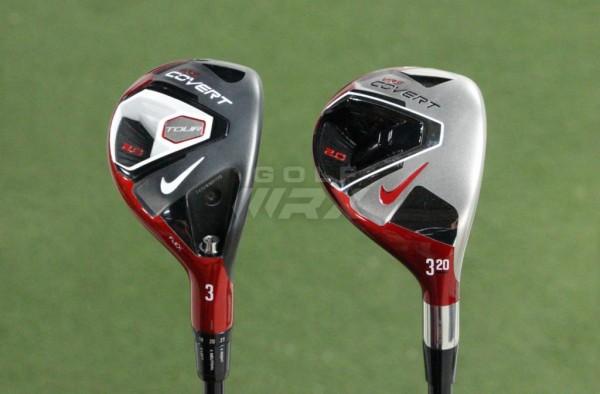
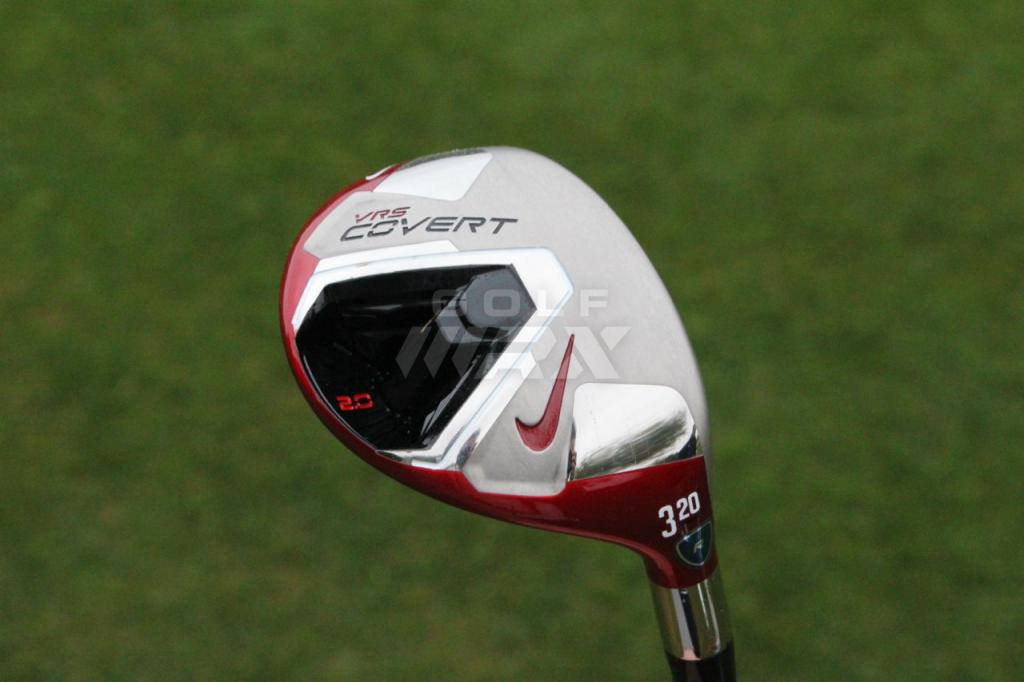
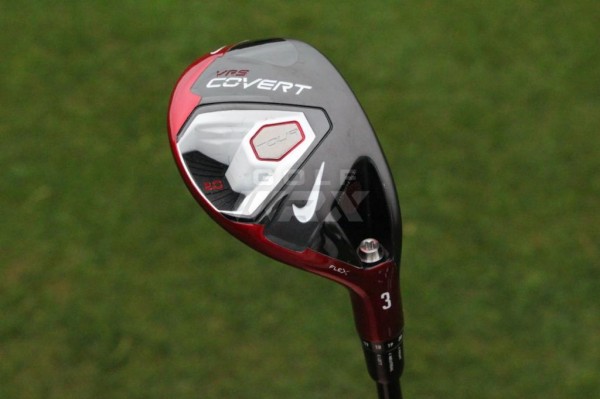
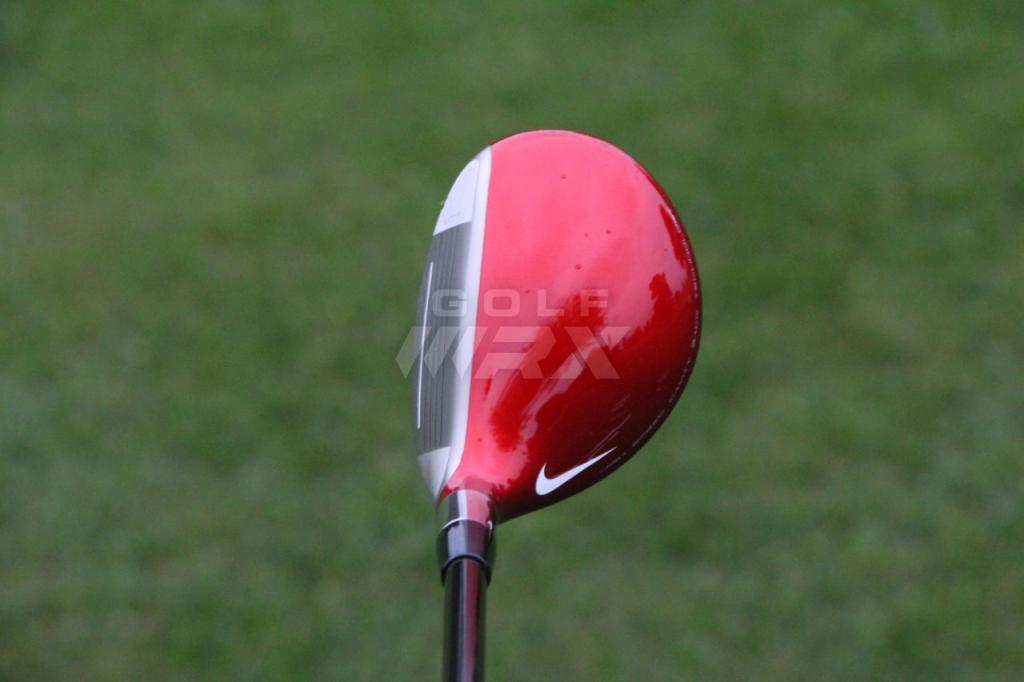
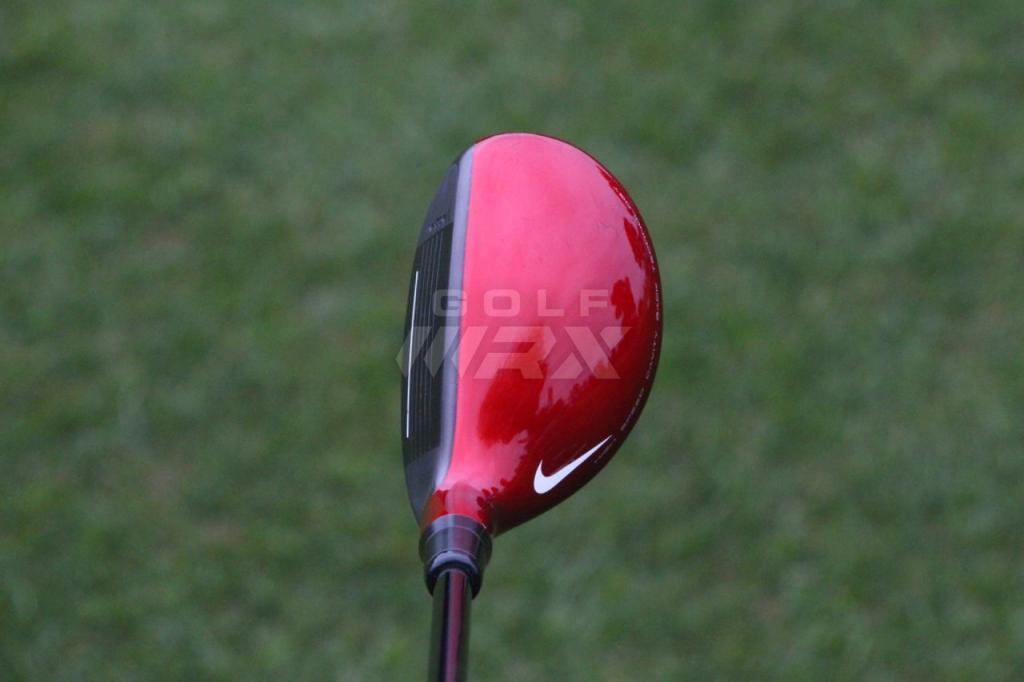
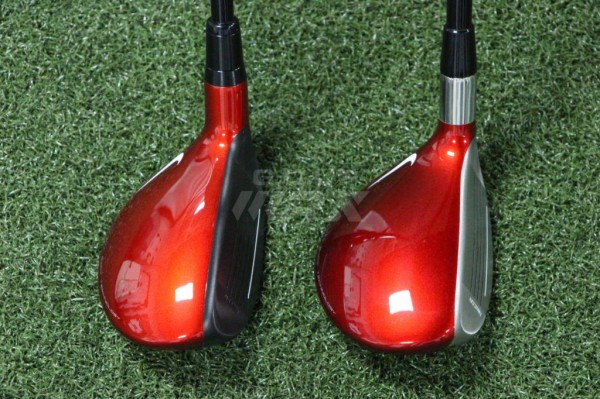


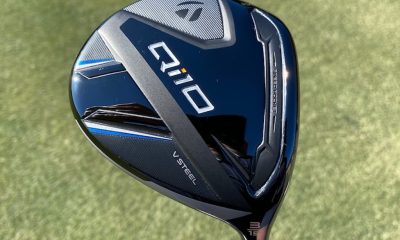

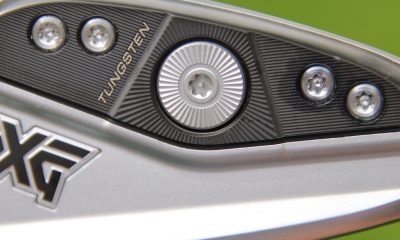

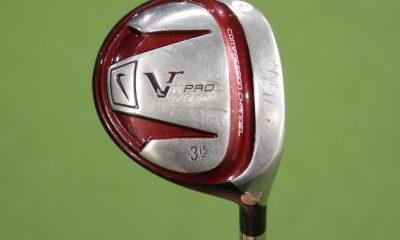



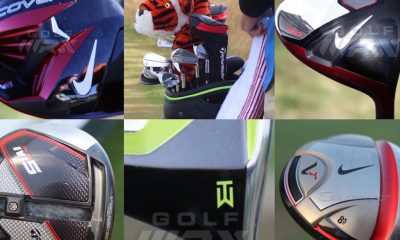

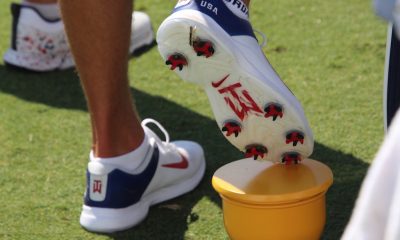

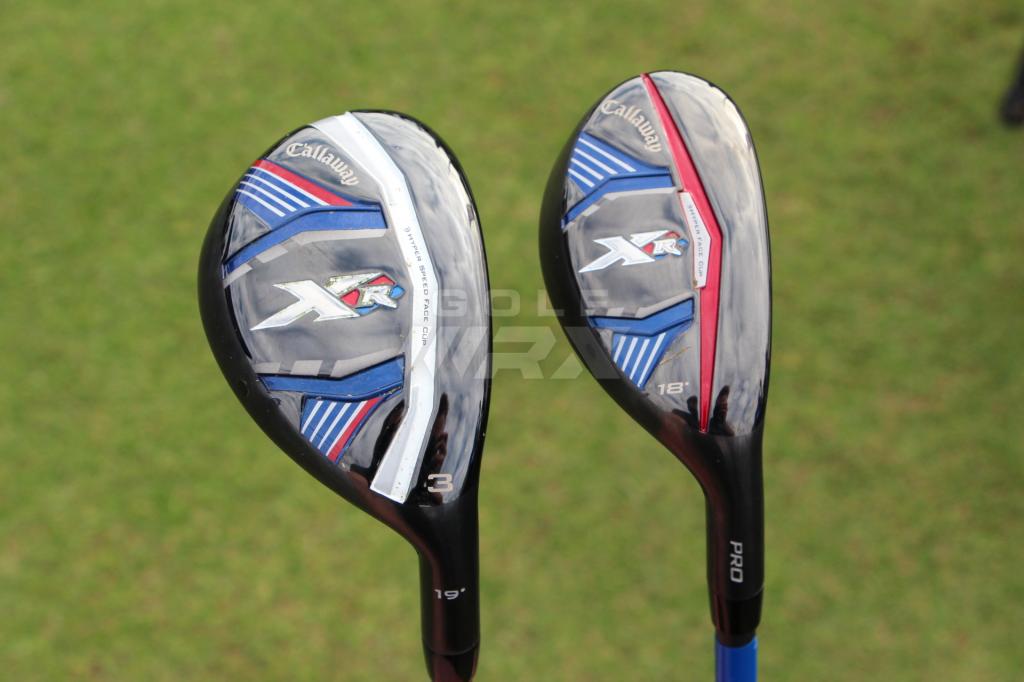
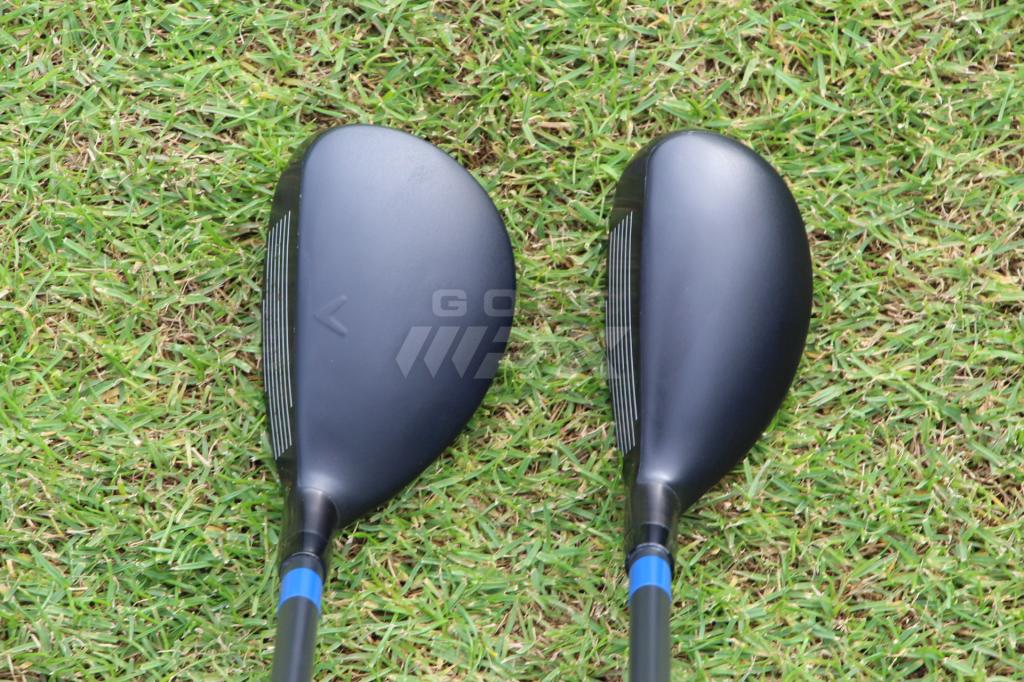
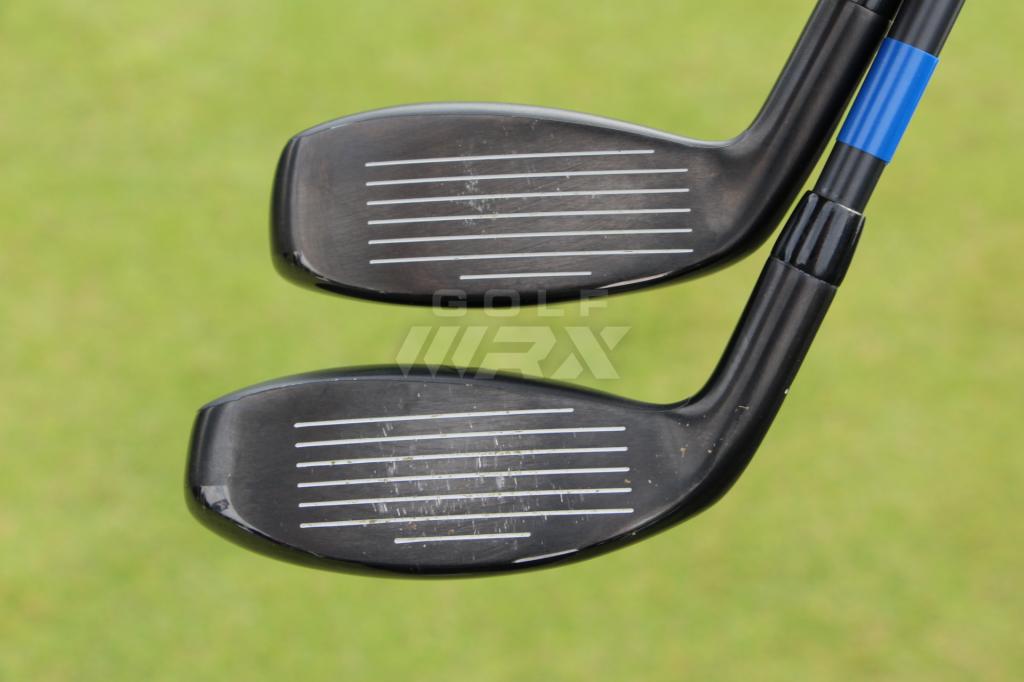

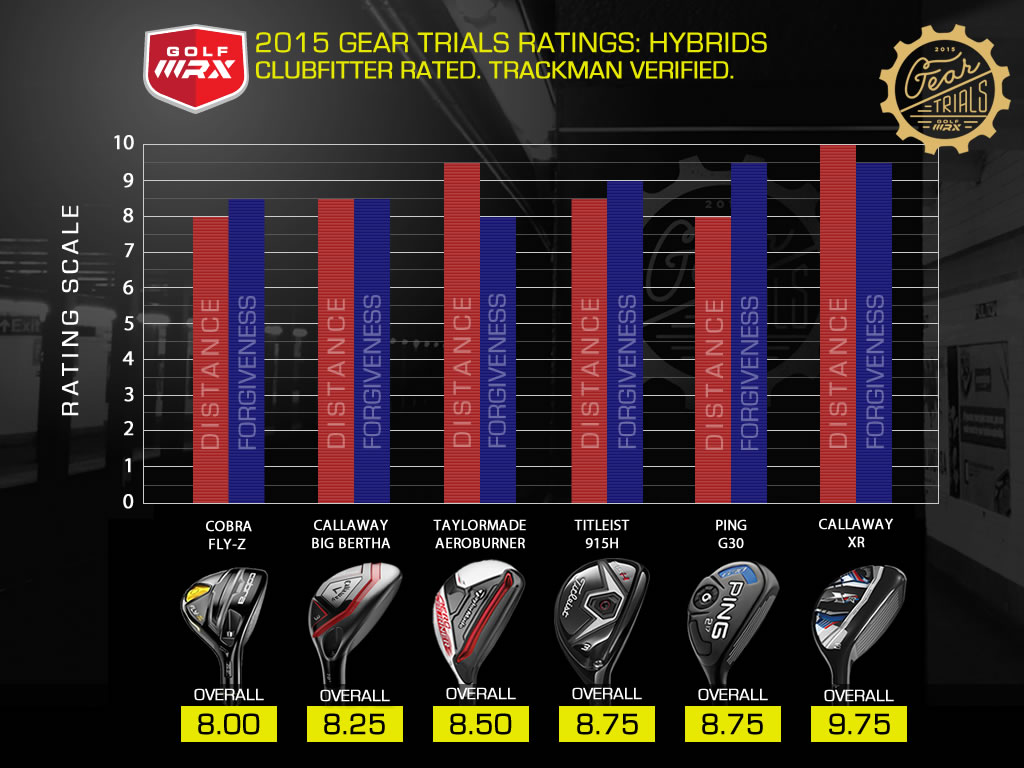
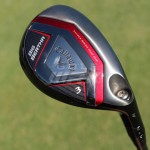
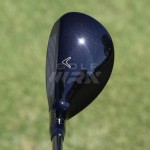
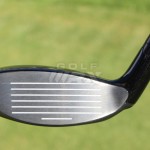
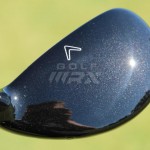

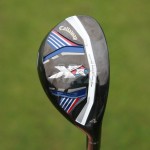
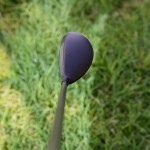
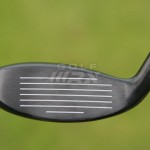
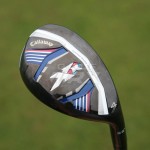

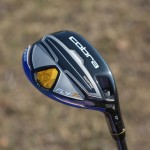
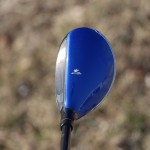
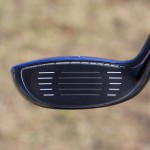
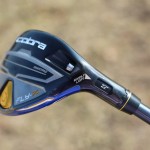
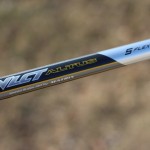
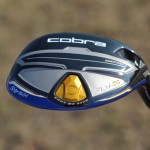

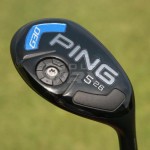
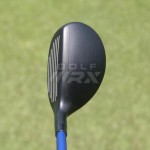
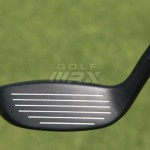

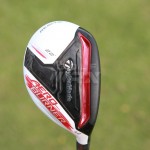
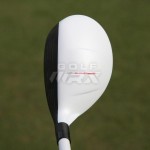
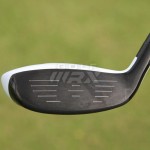
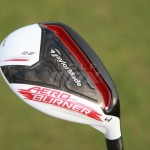

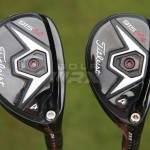
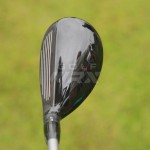
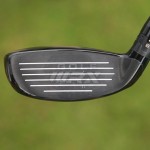

















djcwardog
Apr 8, 2016 at 2:54 pm
I have read the GolfWRX reviews on all the 2014 Covert 2.0 clubs. I found Rusty’s review of these 2.0 hybrids to read well and it provided me with good scoop on the differences between performance and tour models. I am just a bit older than when I was custom fitted at GolfWorks (in Ohio) back in the late ’80’s. My then-103 mph driver swing speed has mellowed a bit to ~10 mph slower. That plus a tendency to get a sore neck or lower back without warning made me realize that DG S-300 shafts were no longer a fit for me. I made the switch over to the Covert 2.0 irons in R flex graphite first and was amazed. An easier swing kept fairly flat allows me to still move the ball and even draw it a bit – all without undue strain on neck and back. That experience made me look for the woods and hybrids to try. What I have ended up doing is to use the performance driver head and the older Machspeed SQ flat black Reg flex shaft, in the flex loft adapter, set at 12.5*, with the pulled-shaft having been tip trimmed to play at 44.5″. Buying all this used, I then put Reg flex performance-model (not silver from tour clubs) Kuro Kage shafts (pulled from performance 3 and 5 woods) into a 3-wood and a 5-wood adapter, to play in the Covert 2.0 Tour heads. Works great for me and allows dialing in lofts to gap the clubs properly. I keep the face angle at neutral. Now with Rusty’s review above, I plan to find a 2.0 Tour #4 Hybrid and reshaft it with the 2.0 performance model #3 hybrid Reg flex Kuro Kage shaft I have saved (they are the same length) and dial in the loft to use it in between the 5-wood and the 4-iron of this set. As for the candy apple red paint job, I like it! Reminds me of hot rod cars and also of the fact that these clubs are metal. If I want something else, I can put my “old” Honma persimmon woods in the bag along with early ’70’s aluminum shaft Spalding Executive irons for a retro round!
Bottom line – great reviews on some great clubs that have helped an older ailing back still play the game!
yo!
Apr 18, 2014 at 5:51 pm
How come clubmakers always come out with a 2.0 version but never a 3.0 version after that?
Seeking70s
Apr 18, 2014 at 9:55 am
Yikes what a bunch of bad attitude negative people. His review in my opinion is very accurate. Go hit em and stop being curmudgeons. Great review Rusty!!
Charlie
Apr 18, 2014 at 1:32 am
Tell me how the look of this club inspires confidence? What are you looking at? The cheap Nike branding? Or the pearly red finish? For a journalism student, this writer does not dig deep with that one.
Jack
Apr 17, 2014 at 9:22 pm
Seriously, every club that gets review on the site is “awesome” according to the reviews and never actually have any critical analysis for any club. Then you see that it’s a club review done by a hack that writes for the site that probably couldn’t tell the difference in any clubs to begin with. Might as well call these “reviews” just advertising to please manufactures that give away all these trips and products. Golfwrx is nothing more than a corporation controlled site now.
Billy
Apr 17, 2014 at 11:50 pm
Maybe because every OEM MAKES A GREAT PRODUCT, this is 2014.
Every single company makes great stuff, up to the consumer what to buy.
Jack, GOLFWRX does not need you, if you think it is too “corporate”.
Make your own site if you don’t like the best golf site on the internet.
AntiJACK
Apr 18, 2014 at 3:30 am
Jack’s just the official GOLFWRX Troller.
Jedidiah
Apr 18, 2014 at 4:15 am
You shut your mouth
SACK
Apr 18, 2014 at 5:51 am
Jedidiah The TROLL
paul
Apr 17, 2014 at 9:08 pm
I look forward to when writers get a little more inspired and start using new words and phrases. Tired of “penetrating trajectory”, and “penetrating flight”, and “penetrating ball”. Starting to wonder if all golf writers have a thing for “penetrating”…
Mat
Apr 17, 2014 at 5:27 pm
Is every review required to use “confidence inspiring”?
Stick to the facts, man.
Seeking70s
Apr 17, 2014 at 4:24 pm
Ditto my findings too on the Tour model!! My buddy hit mine and is buying some tomorrow. Best I ever hit. Have the 3 and 4 and love them. Great SOLID feel and waaay better then last years.